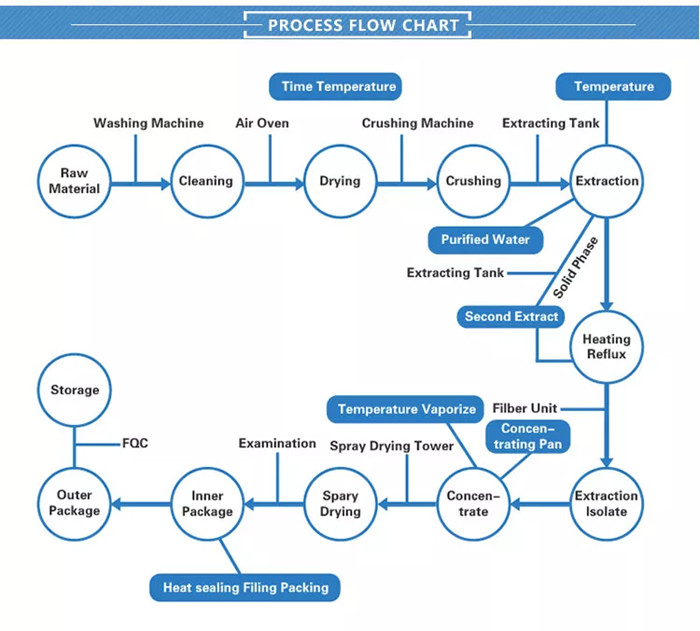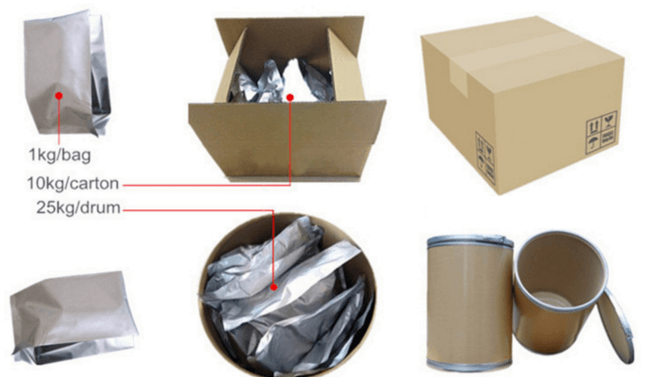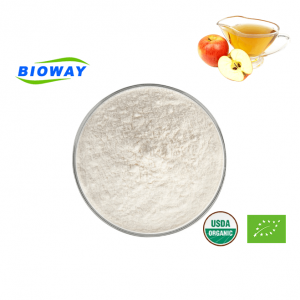Natural Vanillin Powder
Natural vanillin powder is a natural flavoring compound with a sweet and rich vanilla flavor. It is commonly used as a substitute for pure vanilla extract in food and beverage products. There are different sources of natural vanillin, and two common types are vanillin ex ferulic acid natural and natural vanillin ex eugenol natural, which makes it more competitive in the global market. The former is derived from ferulic acid, while the latter is derived from eugenol. These natural sources provide unique characteristics to the vanillin powder, making them suitable for different applications and flavor profiles. Contact us for more information: grace@biowaycn.com.
1. Natural Vanillin (Ex Clove)
| Analytical Quality | ||
| Appearance | White to pale yellow crystalline powder | |
| Odor | Resemble of vanilla bean | |
| Assay | ≥ | 99.0% |
| Melting Point | 81.0~83.0℃ | |
| Solubility in ethanol(25℃) | 1g completely soluble in 2ml 90% ethanol makes a transparent solution | |
| Loss on Drying | ≤ | 0.5% |
| Contaminant | ||
| Heavy Metals (as Pb) | ≤ | 10ppm |
| Arsenic (As) | ≤ | 3pp |
2. Vanillin ex Ferulic Acid Natural
| Physical & Chemical Data | |||
| Color | White or slightly yellowish | ||
| Appearance | Crystalline powder or needles | ||
| Odor | The odor and taste of vanilla | ||
| Analytical Quality | |||
| Assay | ≥ | 99.0% | |
| Residue in Ignition | ≤ | 0.05% | |
| Melting Point | 81.0℃- 83.0℃ | ||
| Loss on Drying | ≤ | 0.5% | |
| Solubility(25℃) | 1 g soluble in 100 mL water, soluble in alcohol | ||
| Contaminant | |||
| Lead | ≤ | 3.0ppm | |
| Arsenic | ≤ | 3.0ppm | |
| Microbiological | |||
| Total Aerobic Microbial Count | ≤ | 1000cfu/g | |
| Total Yeasts and Molds Count | ≤ | 100cfu/g | |
| E. coli | Negative/10g | ||
1. Sustainable Sourcing: Made from renewable resources, the production of natural vanillin powder aligns with environmentally friendly practices.
2. Authentic Flavor: With its natural sourcing, the vanillin powder maintains the authentic flavor profile of vanilla, providing a rich and aromatic taste to food and beverages.
3. Versatile Application: The powder can be used as a flavoring in a wide range of products, including baked goods, confectionery, beverages, and savory dishes.
4. Clean Label: As a natural ingredient, vanillin powder supports clean label initiatives, appealing to consumers seeking transparent and simple ingredient lists.
1. Flavoring Agent: Natural vanillin powder functions as a flavoring agent, imparting the characteristic vanilla flavor and aroma to food and beverage products.
2. Aroma Enhancement: It enhances the sensory profile of food and beverages by providing a natural and authentic vanilla aroma.
3. Antioxidant Properties: Vanillin has been reported to exhibit antioxidant properties, which may contribute to its potential health benefits when consumed.
4. Ingredient Enhancement: It enhances the overall taste and appeal of products, making it a popular ingredient in various food and beverage applications.
5. Sustainable Sourcing: Using renewable resources for production underscores its sustainability and environmentally friendly attributes.
1. Food and Beverage: Natural vanillin powder is widely used in the food and beverage industry as a flavoring agent.
2. Pharmaceuticals: It may be used in the pharmaceutical industry to impart flavor in medicinal syrups, chewable tablets, and other oral dosage forms.
3. Cosmetics and Personal Care: Vanillin powder can be utilized in the formulation of perfumes, scented candles, soaps, lotions, and other personal care products to add a pleasant vanilla fragrance.
4. Aromatherapy: Its natural aroma makes it suitable for aromatherapy products such as essential oils, diffusers, and scented products.
5. Tobacco: Vanillin powder can be used in the tobacco industry for flavoring and aroma enhancement in tobacco products.
The production process for natural vanillin powder using renewable resources such as eugenol and ferulic acid typically involves the following steps:
Extraction of Eugenol and Ferulic Acid:
Eugenol is commonly extracted from clove oil, while ferulic acid is often derived from rice bran or other plant sources.
Both eugenol and ferulic acid can be isolated through techniques such as steam distillation or solvent extraction.
Conversion of Eugenol to Vanillin:
Eugenol can be used as the starting material for the synthesis of vanillin. One common method involves the oxidation of eugenol to yield vanillin using environmentally friendly processes.
Synthesis of Vanillin from Ferulic Acid:
Ferulic acid can also be utilized as a precursor for vanillin production. Various methods such as chemical or bioconversion processes can be employed to transform ferulic acid into vanillin.
Purification and Isolation:
The synthesized vanillin is then purified and isolated from the reaction mixture or extract using techniques such as crystallization, filtration, or chromatography to obtain high-purity vanillin powder.
Drying and Packaging:
The purified vanillin is dried to remove any residual moisture and then packaged into the desired form, such as powder or liquid, for distribution and use in various industries.
It's important to note that the specific production process flow may vary depending on the manufacturer and the chosen method of synthesis. Additionally, sustainable and eco-friendly practices should be considered throughout the entire production process to ensure the environmental responsibility of the final product.
Packaging
* Delivery Time: Around 3-5 workdays after your payment.
* Package: In fiber drums with two plastic bags inside.
* Net Weight: 25kgs/drum,Gross Weight: 28kgs/Drum
* Drum Size & Volume: I.D.42cm × H52cm, 0.08 m³/ Drum
* Storage: Stored in a dry and cool place, keep away from strong light and heat.
* Shelf Life: Two years when properly stored.
Shipping
* DHL Express, FEDEX, and EMS for quantities less than 50KG, usually called as DDU service.
* Sea shipping for quantities over 500 kg; and air shipping is available for 50 kg above.
* For high-value products, please select air shipping and DHL express for safety.
* Please confirm if you can make the clearance when goods reach your customs before placing an order. For buyers from Mexico, Turkey, Italy, Romania, Russia, and other remote areas.
Express
Under 100kg, 3-5Days
Door to door service easy to pick up the goods
By Sea
Over300kg, Around 30 Days
Port to port service professional clearance broker needed
By Air
100kg-1000kg, 5-7Days
Airport to airport service professional clearance broker needed

Natural vanillin powder is certified by ISO, HALAL, and KOSHER certificates.

Natural vanillin is derived from natural sources such as vanilla beans, while synthetic vanillin is created through chemical synthesis. Natural vanillin is often preferred for its authentic flavor profile and is commonly used in premium food products and flavorings. On the other hand, synthetic vanillin is more cost-effective and has a stronger, more intense flavor. Additionally, natural vanillin is seen as a more sustainable option, as it is derived from renewable resources, whereas synthetic vanillin is produced using chemical processes. However, both natural and synthetic vanillin are widely used in the food industry to impart vanilla-like flavor to various products.
Vanillin is actually the molecule that gives vanilla its distinct smell and taste. Vanillin is only one of 200-250 other chemicals inside of vanilla extracted from the plant. Vanilla powder is made from dried, ground vanilla beans, resulting in a product that contains not only vanillin (the primary component of vanilla flavor) but also a range of other natural flavor compounds found in the vanilla bean. This gives it a more complex and authentic vanilla flavor.
On the other hand, vanillin powder typically contains primarily synthetic or artificially produced vanillin, which is the main flavor compound found in the vanilla bean. While vanillin powder may offer a strong vanilla taste, it may lack the complexity and nuances of flavor found in natural vanilla powder.
In summary, the main difference lies in the source of the primary flavor component - vanilla powder comes from natural vanilla beans, while vanillin powder is often synthetic.
The main sources of vanillin include direct extraction from natural plants such as vanilla beans, chemical synthesis using industrial pulp waste liquid and petrochemicals as raw materials, and the use of renewable resources eugenol and ferulic acid as natural raw materials. Natural Vanillin is naturally extracted from the vanilla pods of the Vanilla planifolia, Vanilla tahitensis, and Vanilla pompona orchid species, which are the main sources of vanillin. This natural extraction process yields a high-quality vanillin that is widely used in the food and beverage industry.















